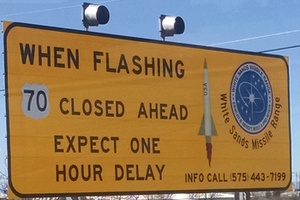
Just in case you forget where you are, here is a reminder on US-70 on the way out of Alamogordo heading west toward White Sands National Monument. First you skirt the edge of Holloman Air Force Base and then you enter White Sands Missile Range. When the need arises, US-70 is closed.
White Sands was amazing. The adjacent Sacramento mountains contain lots of gypsum, which is dissolved in the rain and runs into a lake that has no outlet. When the lake dries up in summer, gypsum crystals are left in the lakebed. The strong westerly winds rip them up and drive them along the ground, where they tumble together until pulverized into a fine powder. The powdered gypsum piles up in dunes, which can move up to 30 feet in a year.
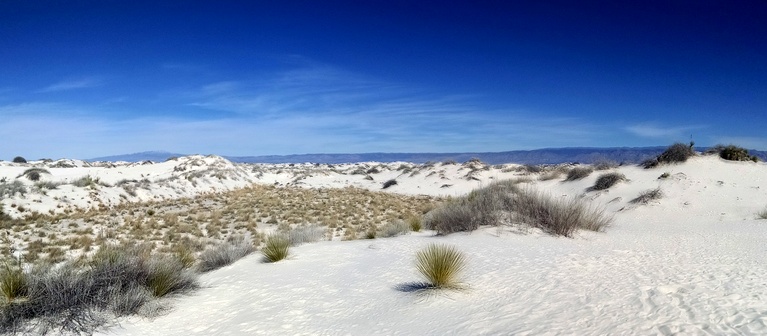
On the eastern edge of the dunes, plants have matured and hold the dunes in place.
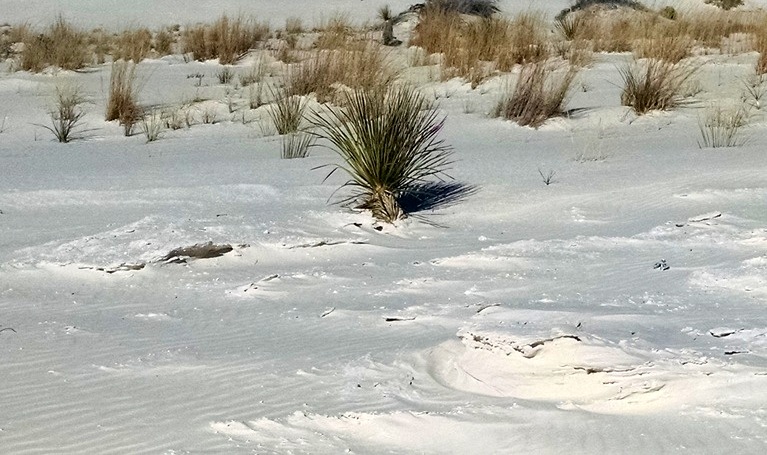
Just like snow, the driving wind can cause the gypsum to form a crust, sometimes several inches thick when and where people don’t walk on it.
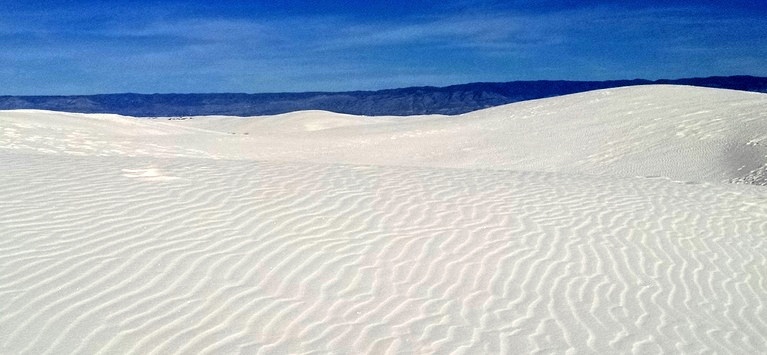
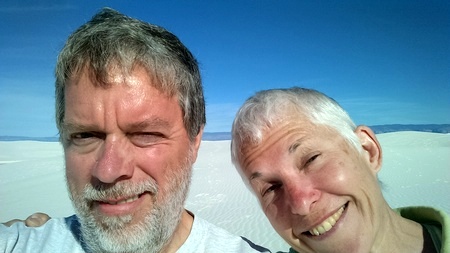
We walked up a dune in bare feet (the sand is almost as soft as talcum powder). All around us, people were running in the dunes, sledding down the dunes, and having a good time. The place is a bit like a trip to the beach and a heavy snowstorm at the same time. The Park Service has built boardwalks and plows the roads and parking areas. The entire area is extremely white and extremely bright. We couldn’t see ourselves in the camera and as you can tell, we were squinting without sunglasses (and also a bit sunburned).
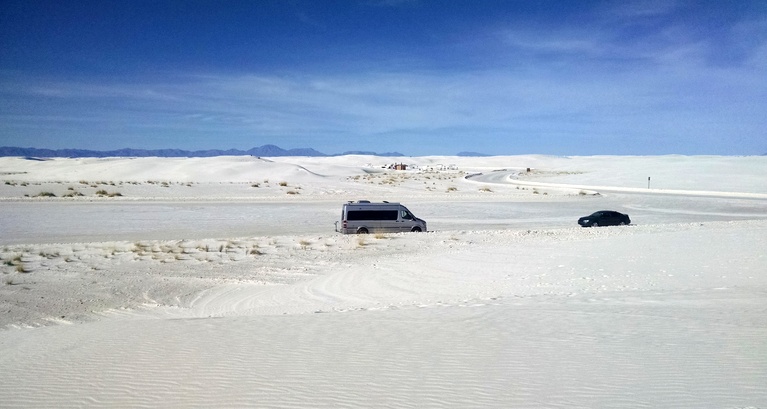
We saw some yucca plants on the tops of the dunes. How do these plants manage to grow on a 50 foot hill of pure gypsum? They don’t! The yucca grows before the dune reaches it, and its roots extend down to the water table. As the sand starts to pile up, the yucca continues to grow a longer stem so it doesn’t get covered by the sand. When the dune finally moves on, the yucca can’t support its long stem, so it collapses.